by Dr. M | Jan 15, 2018 | Education, LASIK, Medical Eye Care, Patient Care, Procedure, Surgery
To help maintain your great vision after LASIK, the use of eye drops is key. A patient recently shared a smartphone alarm app with us that reminds you to use your eye drops regularly!
LASIK surgery is a high-tech procedure that improves your vision in about 20 minutes. The laser application itself takes just seconds.
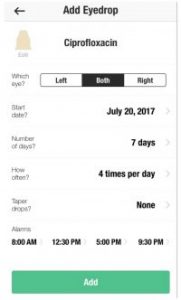
The Eye Drop Alarm keeps you on track with your medications.
But LASIK is much more than just a quick LASER treatment to the eye. Pre-Operatively, there are multiple exams, measurements, interviews, and calculations.
The Post-Operative period is also important to a successful, stable outcome. We consider the postoperative period to be ONE YEAR.
During this year, Dr. Moran highly recommends that patients use a rigorous schedule of artificial tears. Patients who follow this post-op protocol, do better, heal faster, and have less chance of their vision changing for the worse.
Using eye drops after surgery does a number of things:
- Prevents Infection
- Decreases Inflammation
- Provides Added Moisture
- Aids in Healing
Remembering to take your drops the first week is easy.
Seeing without glasses or contacts is an amazing change. Patients are enthusiastic and stay on top of their drop schedule. As more time passes, patients may not think about their new vision as much. Although the newness of the better vision wears off, the need for drops doesn’t!
Studies have shone that your eyes may need supplemental moisture for more than three months after the surgery. Even though the eyes don’t feel dry, they need the added moisture to maintain quality tear film and to provide the best visual result.
The Eye Drop Alarm smartphone app is a great way to help you keep up with your drop schedule:
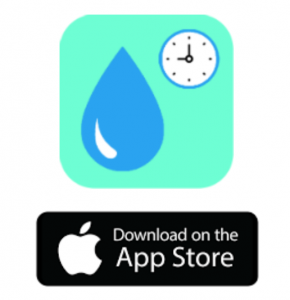
Eye Drop Alarm
A patient recently showed us an iPhone app he downloaded (iPhone only at this point, sorry Android users.) The app is free for download, well written, easy to use and comprehensive.
The full description can be found at http://www.eyedropalarm.com/ The app is free and requires no login or personal information. It has a full database of eye drops, even those used for other eye problems like glaucoma.
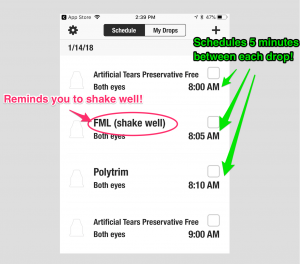
Special instructions too!
The features are useful and extensive. As seen in the illustration, this app also indicates if the drops need any special instructions, for example, the FML should be shaken before use. Using multiple drops requires you to wait five minutes between each different drop so that the eye can absorb each medicine…the app automatically schedules each drop 5 minutes apart!
If you have an iPhone and have to take drops, we highly recommend EyeDropAlarm. You can download the app by scanning this QR code or through iTunes.

by Dr. M | Jan 8, 2018 | Cost, Education, Exam, LASIK, Mark Moran, Medical Eye Care, Patient Care, Surgery

Dr. Mark Moran has been doing LASIK for almost 20 Years.
I’ve been doing LASIK surgery since the turn of this century, so I keep up on LASIK news. I hadn’t seen deeply discounted LASIK at unbelievable prices in quite a while. But recently, I have started to get emails offering me LASIK at $299 per eye.
As a physician practicing in today’s environment, I have a responsibility to ensure my patients are getting a fair price. When an EpiPen can cost $500, and drug prices can increase from $7.50 to $750 overnight, I must make sure that I consider price options when making recommendations for my patients.
In the past, knowing what it costs to operate a LASER and the cost of performing a safe and accurate LASIK procedure, it was evident that there weren’t many LASIK surgeries being performed at the advertised price of $299. It costs far more than $299 for the doctor to perform LASIK, not to mention the equipment costs for accurate testing and measurements.
I had been told by patients who had investigated the $299 LASIK offer, that the $299 LASIK wasn’t available for them. It seems as though $299 was just the starting price. The cost escalated soon after the consult started. This was second-hand information so I never really got the specific facts until now…
Recently I got an email offer which finally included the “fine print.” I’m going to break it down.
Following is a breakdown of the disclaimer on their low-cost offer:
“Prices based on prescription: up to -1.00 $299,”
The first phrase in the disclaimer is the main reason why so few $299 LASIK procedures are done. A -1.00 prescription is probably about 20/40 vision. You would still be able to drive an automobile both during the day and night. (There are stronger restrictions for nighttime driving.)
The pricing detail continues:
“…-1.25 to -2.0: $1099;
…-2.25 and up as well as all hyperopic and/or greater than -0.50 diopter of astigmatism: $1799.”
Then the other shoe drops. If you have a half of diopter of astigmatism that raises the price to $1799, which is now approaching a reasonable price for a standard LASIK procedure. Seventy percent of all prescriptions written in America have some astigmatism. Which means if there if there is a significant enough prescription that needs correction and one is given, three-quarters of the time it’s going to have astigmatism. The price has now hit the $1800 per eye mark.
“Individual results will vary.”
I got a chuckle from this portion of the disclaimer. Pretty obvious observation.
“Candidacy determined by an independent doctor located within or adjacent to the LASIK Vision Institute’s (LVI) facility. All procedures performed by an independent surgeon. Punctal plugs, assurance plans and other technologies available at additional cost. This offer may not be combined with other offers. Other conditions may apply.”
And then there’s the “additional cost” disclaimer. So even with the maximum quoted price of $1799 there are still add-on charges to consider.
The take-home message: you’re not likely to get LASIK (or do you need LASIK) at $299. There may be small variations in price for LASIK surgery by area doctors, but the costs for procedure tend to be similar.
The smart consumer considering LASIK surgery should be looking for other factors in making their decision. Choose your surgeon based on:
- Level of Experience,
- Successful Patient Outcomes,
- Equipment and Technology Used,
- Patient Satisfaction & Reviews,
- Overall Quality of Care.
caveat emptor.
by Dr. M | Nov 27, 2017 | Appointment, Dry Eye, Exam, Experience, LASIK, Medical Eye Care, Procedure
If you have dry eye, you are not alone.
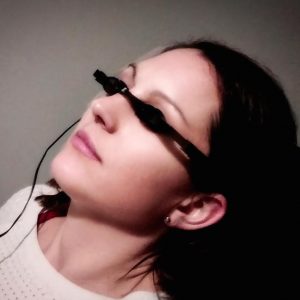 Dry eye is one of the most commonly reported eye complaints. Dry eye is a chronic medical problem that may get worse over time. We now offer in-office heat therapy treatments that target the cause of dry eye, and help preserve a healthy tear system.
Dry eye is one of the most commonly reported eye complaints. Dry eye is a chronic medical problem that may get worse over time. We now offer in-office heat therapy treatments that target the cause of dry eye, and help preserve a healthy tear system.
Dry Eye Symptoms: Along with pain, sandy or gritty feeling, and redness, dry eye can cause eye fatigue and blurred vision. It can also cause difficulty in reading or working on a computer. These symptoms can impact your daily activities.
If you have any of these symptoms but artificial tears aren’t providing relief, it may be time for heat therapy.
15-Minute Heat Therapy Treatments Now Available in our Office: Moran Eye Associates is now offering a safe, in-office, FDA-approved heat therapy. Dr. Moran recommends starting with four 15-minute weekly treatments to help improve the quality of your tear film.
Here’s How Heat Therapy Works: Heat therapy targets one of the major causes of dry eye, Meibomian Gland Dysfunction (MGD). The meibomian glands, which are located in your upper and lower eyelids, provide an essential part of your tear film, lipids (oils). If these glands are blocked, the quality of your tear film suffers. Without these oils, tears evaporate too quickly.
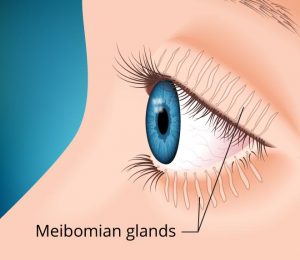
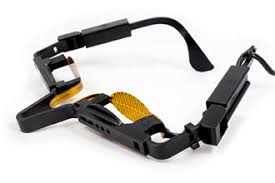
Heat therapy clears blocked meibomian glands, allowing the lipids to flow, and tear film to improve
What Happens During Treatment? While you are seated in a recliner, a technician will adjust the therapy glasses for optimal results. Then, you can sit back, relax and enjoy 15 minutes of targeted heat therapy. A week later you can return for a repeat treatment
How Do I Get Started? Schedule your appointment for a tear film evaluation to see if this treatment is right for you. Once Dr. Moran confirms the diagnosis of the Dry Eye Syndrome/MGD, you can start treatment right away.
Call to schedule your evaluation appointment 610-628-2022.
Pricing: $59 for the 1st Treatment.
Package of 4 additional treatments: $179
For optimal results, Dr. Moran recommends starting your therapy with weekly treatments.
P.S. Dr. Moran and our entire staff have used this heat therapy treatment and are impressed with our results!
by Dr. M | Nov 24, 2017 | Appointment, Exam, Glaucoma, Medical Eye Care, Patient Care
Glaucoma is known as the “Silent Thief of Sight” because it can begin to rob you of your sight before you notice any symptoms.
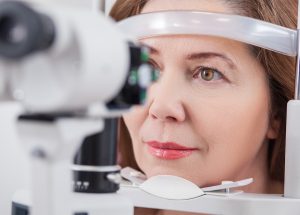
Regular exams are essential!
Regular eye exams are your best defense against the early detection and treatment of glaucoma. At each visit, we will check your eye pressure, and Dr. Moran will look at the back of your eye to examine the health of the optic nerve. These important tests can detect the start of glaucoma, and get you started on a simple treatment therapy that can save your sight.
Know if you are at risk.
According to the Glaucoma Research Foundation, people in these categories are at higher risk for developing glaucoma.
Age 60 or Older: Glaucoma is much more common among older people. You are six times more likely to get glaucoma if you are over 60 years old.
Family History: The most common type of glaucoma, primary open-angle glaucoma, is hereditary. If members of your immediate family have glaucoma, you are four to nine times higher to develop this disease.
African Descent: Glaucoma is six to eight times more common in African-Americans than in Caucasians.
Hispanics in Older Age Groups: Recent studies indicate that the risk for Hispanic populations is greater than those of predominantly European ancestry, and that the risk increases among Hispanics over age 60sisipisi.ccsisipisi.ccsisipisi.ccsisipisi.cc.
Asian Descent: People of Japanese descent are at higher risk for glaucoma.
You may NOT notice a change in your vision until irreversible damage is done.
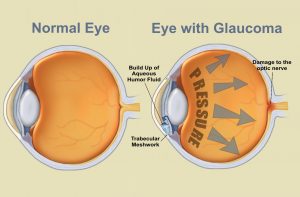
Eye with glaucoma
Many people who are in the early stages of glaucoma are unaware of their condition. When vision loss becomes noticeable, glaucoma may have caused irreversible damage.
If left untreated, glaucoma will lead to blindness. Although there is no cure, medications and surgery can help slow the disease’s progression. Vision loss occurs because increased eye pressure from glaucoma can damage the optic nerve, which carries images from the eye to the brain.
Don’t delay. Early detection and treatment is the best way to manage your condition. Dr. Moran may prescribe eye drops, which, when used daily, may be all that you need to keep your eyes healthy. If prescription eye drops are not sufficient to control your glaucoma, laser treatment or surgery may be an option.
Monitoring your progress: In addition to an eye exam, Dr. Moran may request additional tests. Glaucoma patients are monitored using annual visual field and OCT tests. Changes in your test results may indicate a need for an update in your treatment plan.
To learn more about this disease, visit the Glaucoma Research Foundation GRF.
by Dr. M | Nov 7, 2017 | Donate, Eyeglasses, Glasses, Medical Eye Care, Office
 You can change lives by donating your used eyeglasses – RECYCLE for SIGHT!
You can change lives by donating your used eyeglasses – RECYCLE for SIGHT!
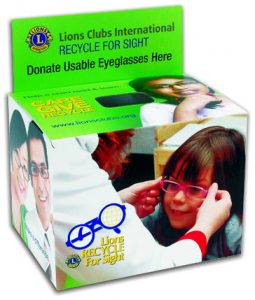
We have a donation box in our office!
Moran Eye Associates is working with the local Lions Club to collect eyeglasses to distribute to those in need. Dr. Mark Moran and his wife, Paulette are Lions Club members. They encourage everyone to donate their used specs.
Changing lives, one pair at a time: In almost any home, you can find a pair of eyeglasses that are no longer being used. Need a little motivation to clean out those drawers? Your donated eyeglasses can change the lives of children and adults.
For many years, the Lions Club “Recycle Your Sight” program has distributed glasses to people in need in low and middle-income communities. Donated glasses can:
Success in school: Help a child read
Work opportunities: Help an adult succeed in his or her job
Quality of life: Help a senior maintain independence

Thanks for your donation, Sherri!
We know that many of our patients no longer need their old prescription glasses. Especially those who have improved their vision through LASIK or cataract surgery with Dr. Moran!
If you have a pair (or more!) of glasses to donate, bring them to our office at 1204 Delaware Avenue in Fountain Hill. We would be happy to accept your donation during our normal office hours, 8-4pm, Monday -Thursday. Prescription glasses, reading glasses, and sunglasses are all needed.
Looking for a great community service project for your office or for student groups? This recycling program is an easy project to coordinate. Contact us for more information and to request a collection box.
Lions Club – Recycle for Sight
by Dr. M | Oct 30, 2017 | Appointment, Dilation, Exam, Medical Eye Care, Patient Care, Retina, Uncategorized
DROPS, DROPS, when does it stop?
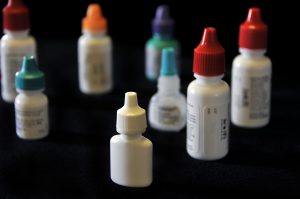
Ocular medication for dilating and glaucoma, assorted types
Patients often ask when they come in to see Dr. Moran for a complete exam, diabetic exam or cataract recheck, “Why all these drops?” Here is the simple explanation.

The eye doctor is easier than the dentist!
Getting a comprehensive eye exam without dilation, is like going to the dentist and not opening your mouth. Sure, he can see your lips and the shape of your jaw but he’s unable to see the health of your teeth.
Dr. Moran can examine the lids, lashes, and cornea (outermost layer of your eye), but to see beyond the surface, you need the drops, drops and more drops.
Depending on your age, diagnosis and health history you may receive more drops than another. Let’s discuss someone in their 60’s with diabetes or cataracts.
First, you will receive the “yellow drop”- No your eyes will not stay that color. This drop will allow us to check the intraocular pressure of your eye (glaucoma screen). It also acts as a mild numbing agent.
Next, you will receive a Phenylephrine drop. This is the drop which will dilate your pupil and allow Dr. Moran to see into the depths of the eye and examine the retina.
Lastly, comes the Mydriatic drop which paralyzes the iris muscle to keep the eye dilated for the duration of the examination.
That’s the answer to why all the drops. Now when will it STOP?
Usually, dilation lasts from 4-6 hours. It will affect your ability to work close-up and you will be sensitive to light. Blue eyes tend to stay dilated longer. It is not unusual for some patients to remain dilated for more than 6 hours, but dilation is not harmful to the eye.

You can drive if you are comfortable doing so. We recommend dark sunglasses and will provide you with them if you forget to bring yours.
Although being dilated can be an inconvenience, the benefit significantly outweighs the hassle.
Schedule your DILATED eye examination by calling or texting our office at 610-628-2022, we look forward to seeing you.
Contributed by Mandy Bolton, COA




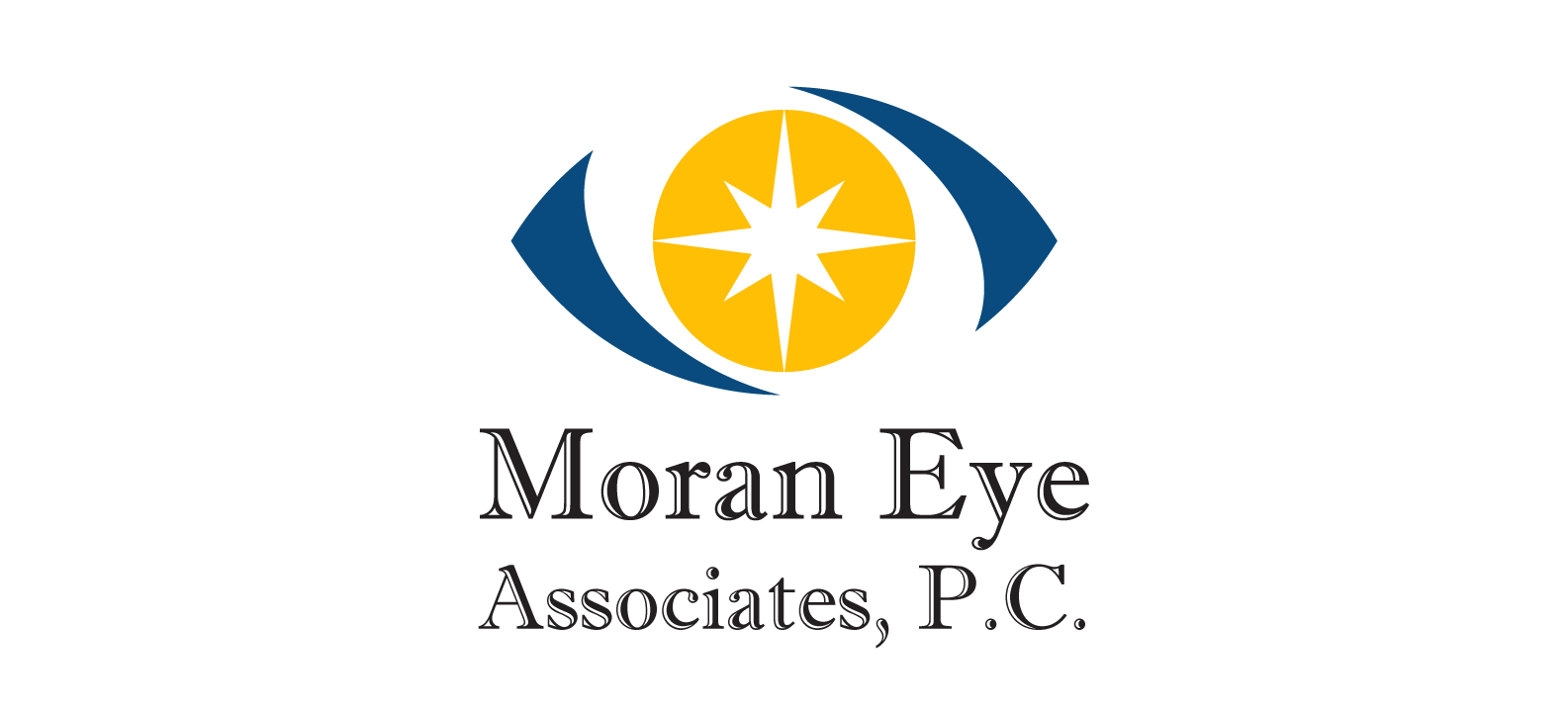

 Dry eye is one of the most commonly reported eye complaints. Dry eye is a chronic medical problem that may get worse over time. We now offer in-office heat therapy treatments that target the cause of dry eye, and help preserve a healthy tear system.
Dry eye is one of the most commonly reported eye complaints. Dry eye is a chronic medical problem that may get worse over time. We now offer in-office heat therapy treatments that target the cause of dry eye, and help preserve a healthy tear system.



 You can change lives by donating your used eyeglasses – RECYCLE for SIGHT!
You can change lives by donating your used eyeglasses – RECYCLE for SIGHT!



